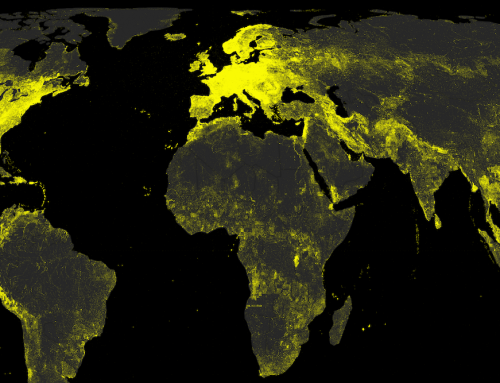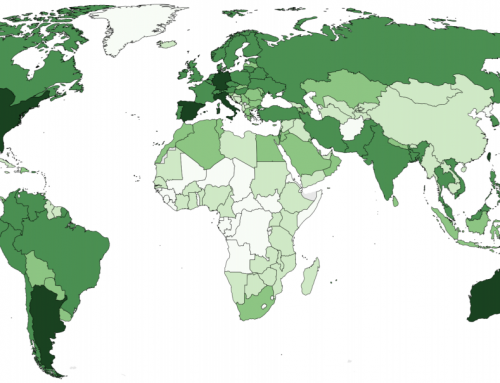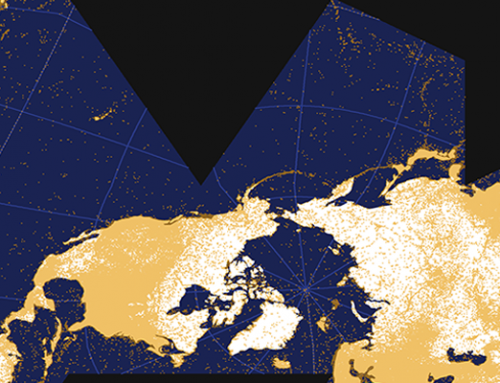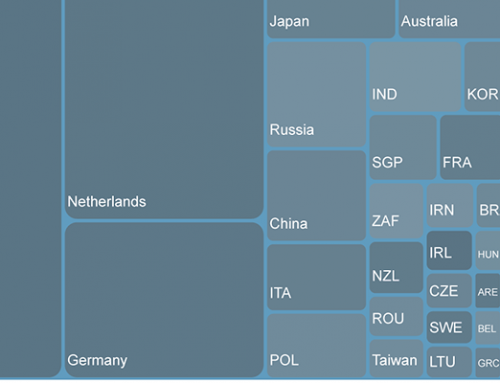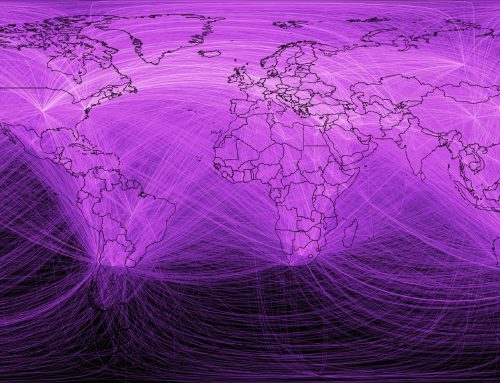(Click to see full image)
This interactive bar chart visualizes the “openness” of countries in terms of the availability of open datasets in a range of sectors. The “openness” metrics are all described in detail in the Open Knowledge Foundation’s Open Data Index.
Data
This graphic illustrates the 2013 Open Data Index published by the Open Knowledge Foundation. The index has been calculated for 70 countries, based on 700 datasets, concerning 10 different topics, ranging from public transport to government spending.
Each country has been evaluated on each topic, which in turn has been assessed on nine criteria, ranging from the existence of data on the given topic, to their availability online, and up-to-dateness. Each criterion is represented as a section of the bar chart, whereas countries that don’t fulfil any criterion for a given topic are represented as small circles.
Findings
The Open Data Index website reports that the overall “best scores for key open data were the United Kingdom and the United States, both countries which have been at the forefront of open data and open government internationally.”
It is important to point out that half of the countries included in the Open Data Index are located in North America or Europe, representing about three-quarters of the countries in those regions. The remaining countries referred to in the index are then spread in the other parts of the world, with only five countries from Sub-Saharan Africa and seven from South America.
Nonetheless, we do see a prominent “openness” divide. All of the highest scores are given to countries in North America and Europe (plus Australia and New Zealand). If we aggregate scores by region, these differences become especially apparent, with European and North American countries having average scores about double of the averages obtained by Asia, Africa, and Latin America.
Wealth is also strongly correlated with the “openness” of countries, as the Open Data Index score shows a significant correlation with both the World Bank income groups[1] and the Gross National Income per person,[2] each accounting for about one third of the variation in the Open Data Index scores.
The “openness of a country” is also correlated with its Internet penetration,[3] which accounts for more than a quarter of the variation in the Open Data Index scores. No country with an Open Data Index score above 600/1000 has an Internet penetration lower than 80%, and no country with an Internet penetration below 50% has a score above 500/1000 (with the exception of Moldova). However, there are several countries with high Internet penetration and relatively low Open Data Index scores, including Bahrain, Cyprus, and Belgium.
[1] Spearman’s rho = 0.63, rho² = 0.40, p < .01.
[2] Spearman’s rho = 0.58, rho² = 0.34, p < .01.
[3] Spearman’s rho = 0.54, rho² = 0.29, p < .01.
